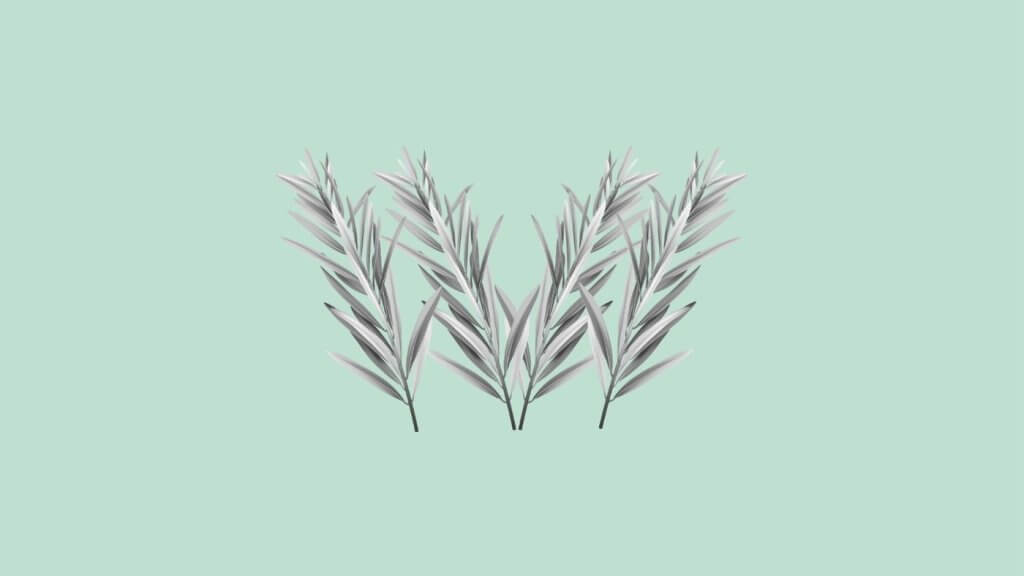Bottlebrush trees (Callistemon spp) get their name from the flower spikes which resemble brushes used to wash out bottles. Some varieties are considered edible and have medicinal uses. One of the most common uses includes making tea with its leaves and blossoms.
These plants do well in warm, temperate climates with full sun and well-draining soil. Depending on the variety and pruning methods, they can grow 3-30 feet in height.
Bottlebrush trees can be a gorgeous evergreen shrub for borders and gardens. They make a beautiful flowering shade tree for yards and landscapes.
What Are Bottlebrush Trees?
Bottlebrush trees belong to the genus Callistemon and contain more than 40 species.
What Are You Foraging For Right Now?
We're thrilled to hear your ideas. What would you like to submit today? Feel free to share your thoughts and experiences with us.
Callistemon has two Greek words. “Kellis” means beautiful, and “stemon” means stamen. The reddish-purple color they contain does indeed make them “beautiful stamen.”
The most well-known varieties of bottlebrush trees are:
- Callistemon citrinus (Crimson or Red Bottlebrush):
- One of the most popular and widely cultivated bottlebrush varieties.
- Features bright red, cylindrical flower spikes.
- Medium-sized, reaching a height of 6 to 15 feet.
- Callistemon viminalis (Weeping Bottlebrush):
- Known for its weeping or pendulous branches.
- Produces red or sometimes yellow flower spikes.
- Medium to large size, reaching a height of 10 to 25 feet.
- Callistemon salignus (White or Willow Bottlebrush):
- Notable for its cream or white-colored flower spikes.
- Medium-sized, reaching a height of 10 to 15 feet.
- Leaves have a willow-like appearance.
- Callistemon sieberi (River Bottlebrush):
- Features cream or pale yellow flowers.
- Can grow into a large shrub or small tree, reaching heights of 15 to 30 feet.
- Native to eastern Australia.
- Callistemon subulatus (Dwarf Bottlebrush):
- Compact and low-growing variety.
- Produces red flower spikes.
- Suitable for smaller gardens or as a ground cover.
- Callistemon pallidus (Lemon Bottlebrush):
- Features pale yellow to creamy-white flower spikes.
- Medium-sized, reaching heights of 10 to 20 feet.
- Leaves have a lemon scent when crushed.
- Callistemon comboynensis (Comboyna Bottlebrush):
- Native to Queensland, Australia.
- Features red or pink flower spikes.
- Can grow into a large shrub or small tree.
- Callistemon rigidus (Stiff Bottlebrush):
- Known for its stiff, upright branches.
- Produces red or pink flower spikes.
- Medium-sized, reaching heights of 10 to 20 feet.
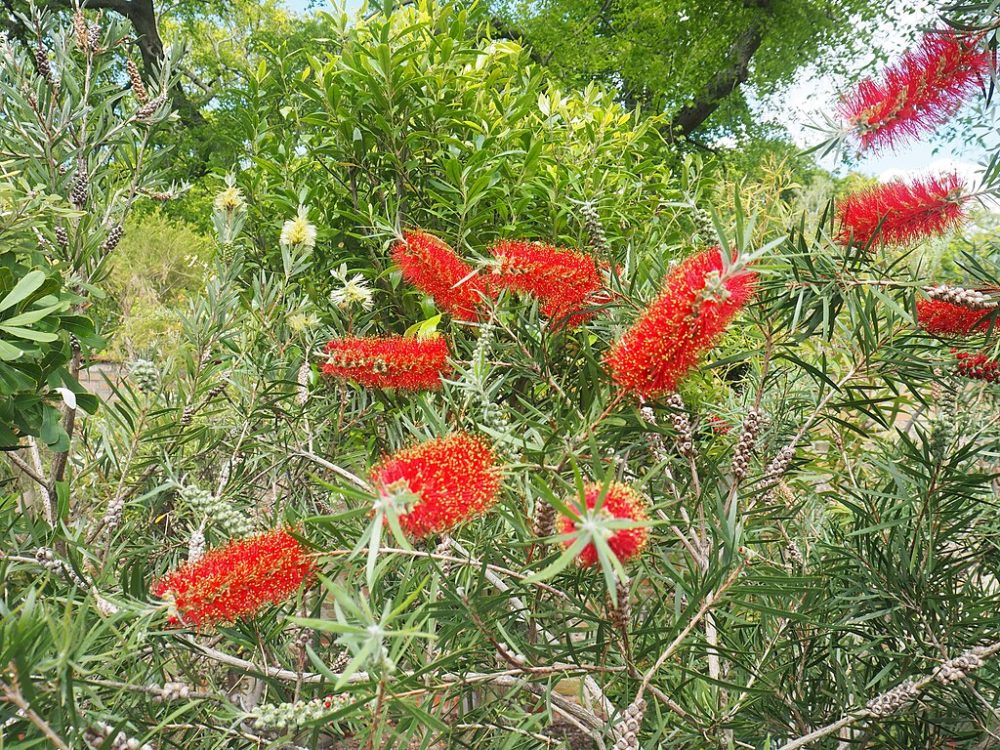
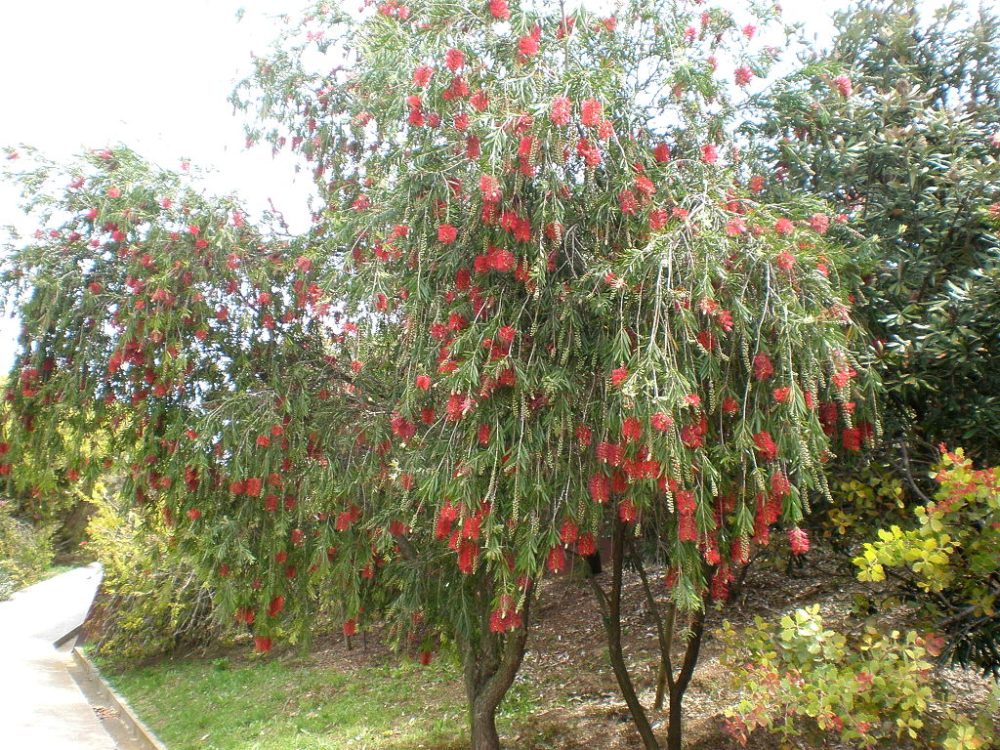
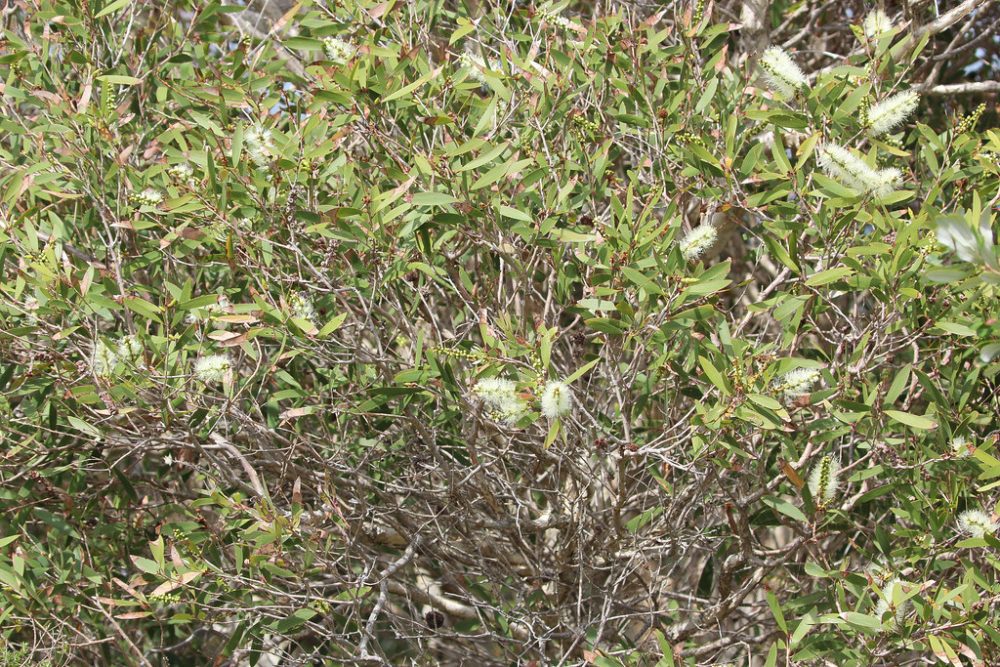
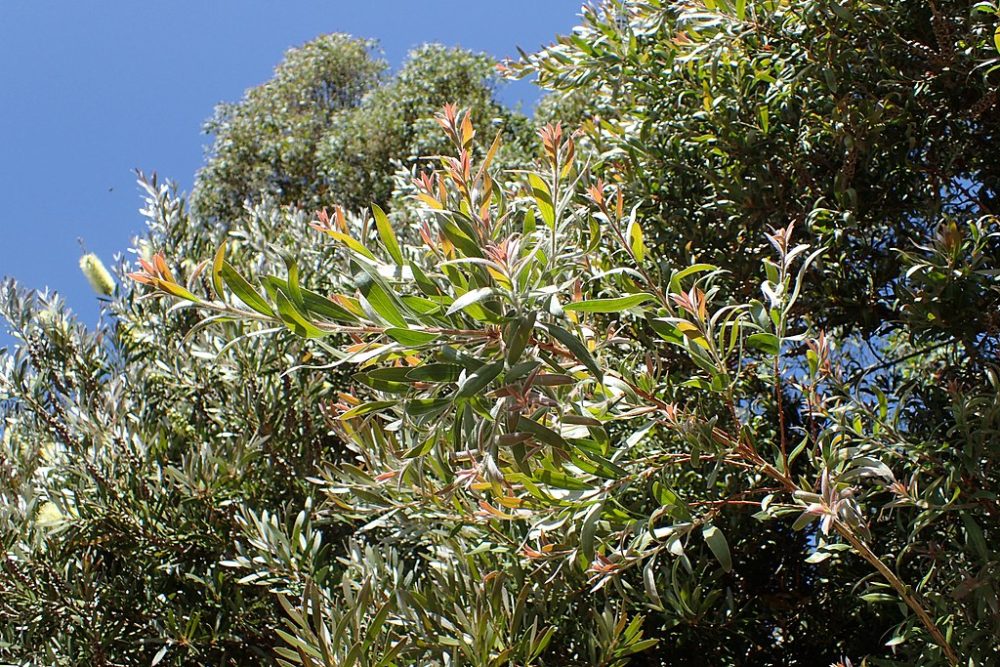
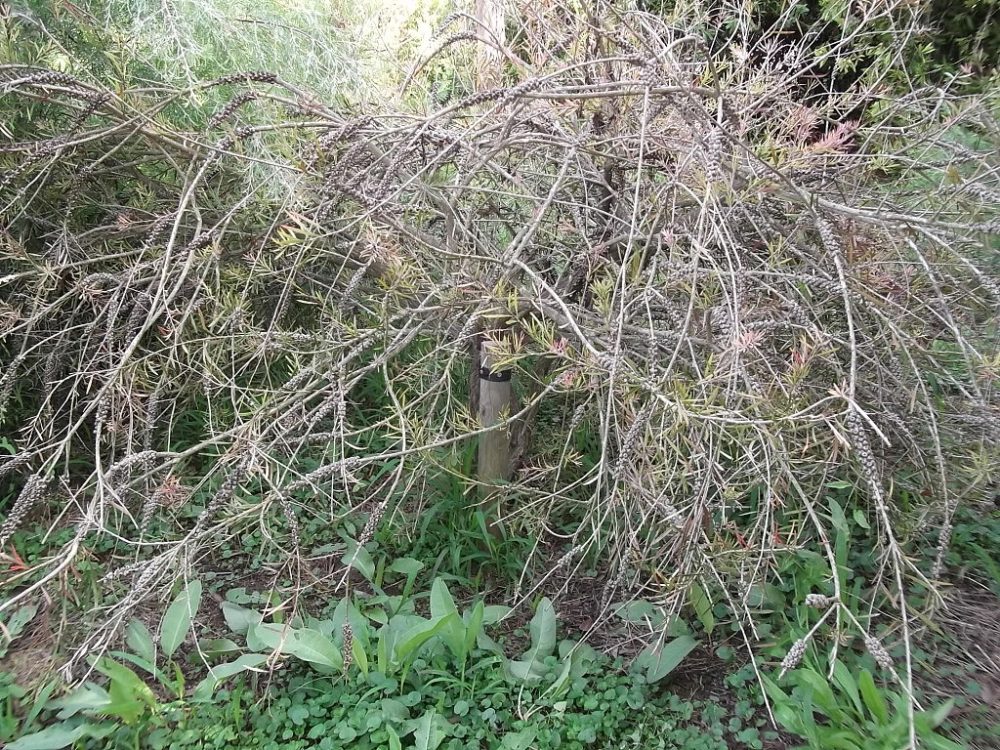
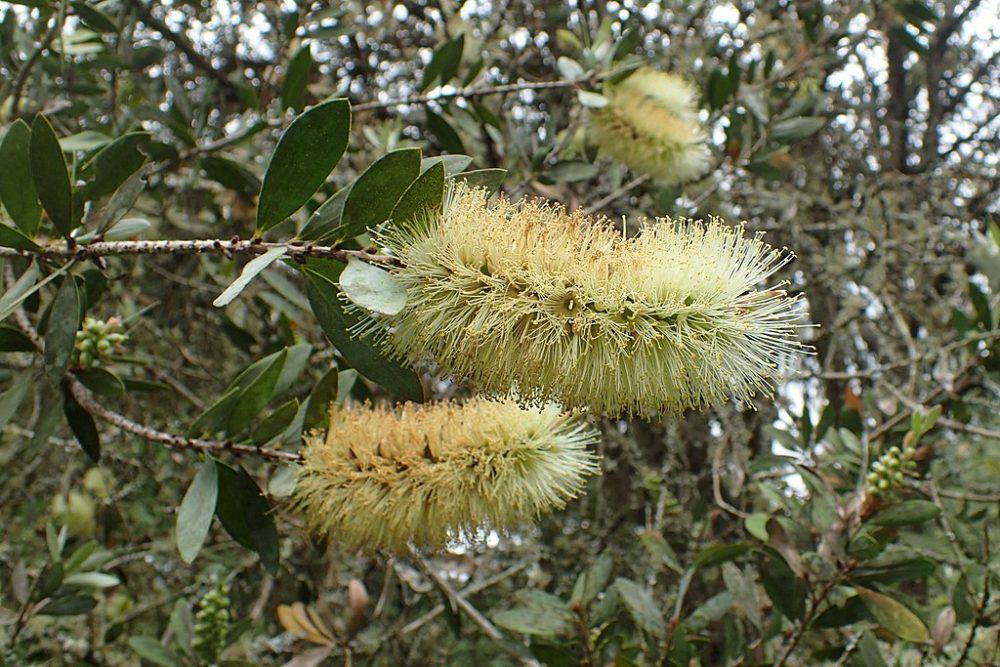
What Color Are Bottlebrush Flowers?
The most common color of bottlebrush flowers is red, but certain species produce flowers in shades of pink, yellow, or green.
Are Bottlebrush Trees Evergreen?
Yes, bottlebrush trees are typically evergreen, meaning they retain their leaves throughout the year.
Bottlebrush Vs. Melaleuca
Bottlebrush trees can be easily confused with Melaleuca plants, a relative belonging to the same family, Myrtaceae. They have similar leaves, blossoms, and seeds.
The difference is bottlebrush blossoms are free, meaning the stamen are each on their stem.
Melaleuca blossoms are united, meaning many stamens are on a single stem.
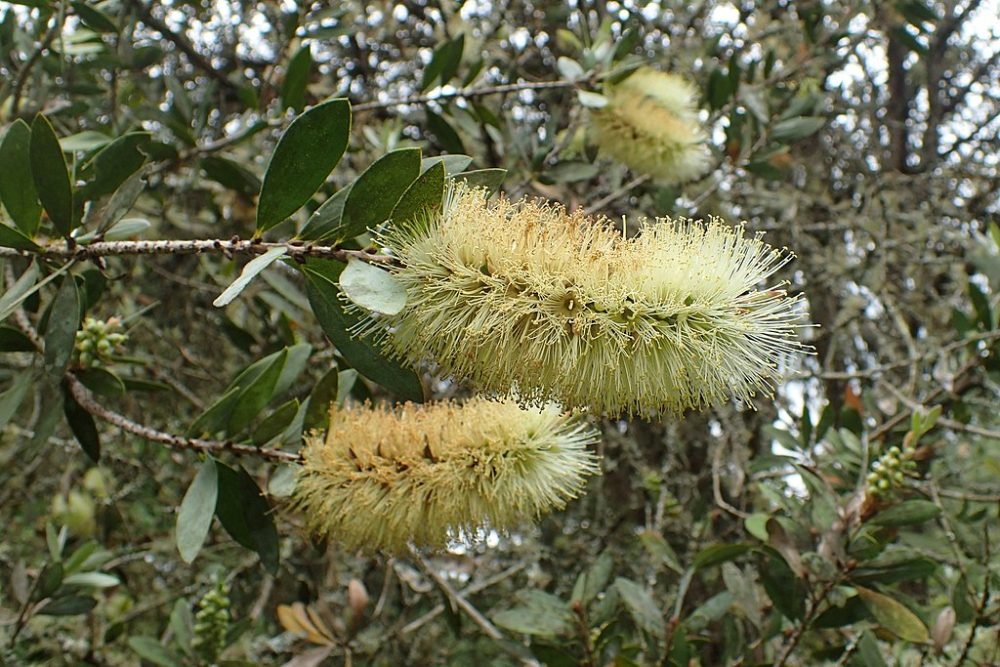
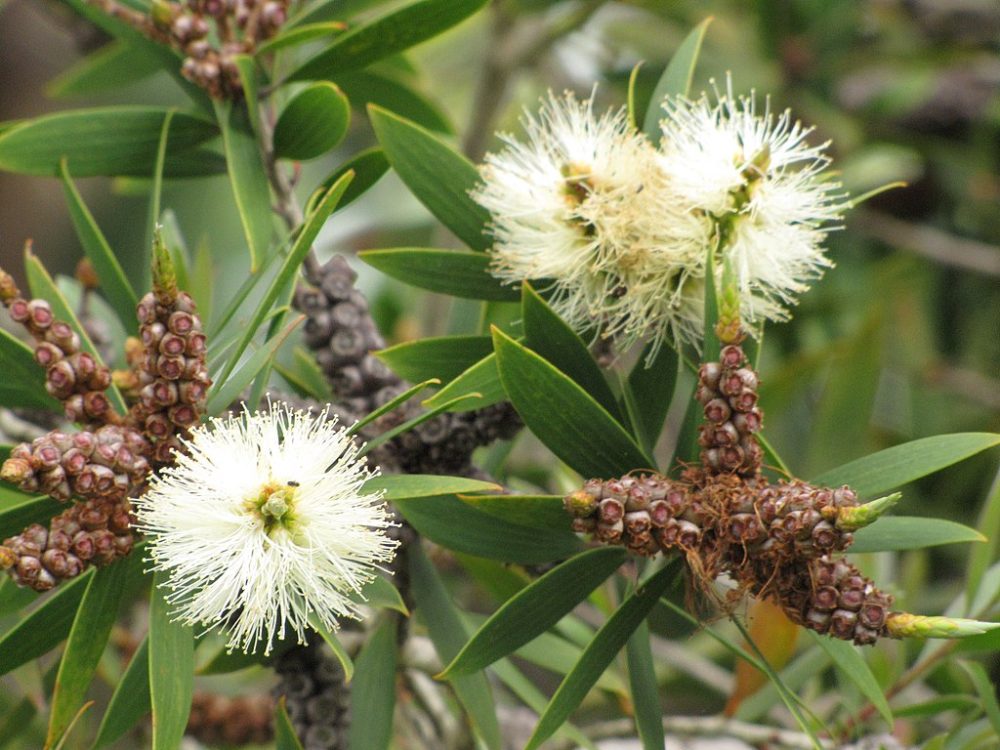
Where do Bottlebrush trees grow?
Bottlebrush trees are native to Australia. They grow wild in the east and south-east portions of the continent where the climate ranges from temperate to tropical. Bottlebrush trees have been cultivated worldwide but do best in mild climates.
While bottlebrush trees are not considered wild or native flora in the United States, you may find them planted in residential areas, parks, or botanical gardens. They grow well in USDA hardiness zones 8b-11.
These plants like full sun and do well in most types of soil as long as it is well draining. They are drought resistant and have a high salt tolerance.
Bottlebrush Trees Uses
Bottlebrush trees have several benefits:
- The bright red flowers and sweet nectar attract pollinators such as butterflies, bees, and hummingbirds.
- Dwarf varieties make excellent borders around gardens and flower beds. They are also deer resistant.
- Bottlebrush shrubs can be used as a border along pools and parking areas—plant as a hedge along your yard for a naturally beautiful privacy fence.
- Tall varieties such as the Weeping Bottlebrush make excellent shade trees.
- The crushed leaves of bottlebrush plants can help repel insects.
- The fresh springs of bottlebrush leaves can be put near bedding, clothing, or other areas to keep bugs away.
- The stamens can be used to make dye for fabrics.
- Bottlebrush trees contain minerals and flavonoids used for medicinal purposes.
- They are edible and can be made into a tea or used in other dishes.
Is Bottlebrush Edible?
Not all bottlebrush tree species are considered edible.
One example of a bottlebrush tree with edible parts is the Lemon Bottlebrush (Callistemon pallidus). The leaves of this species have a lemon scent when crushed, and some people use them to infuse flavor into tea or for culinary purposes.
Crimson Bottlebrush can be used in salads or as a flavoring agent.
The young shoots and leaves of Weeping Bottlebrush are used in traditional Aboriginal cuisine.
Bottlebrush trees are known to contain:
- Silicon
- Potassium
- Selenium
- Aluminum
- Manganese
- 15 types of bioflavonoids
Any Poisonous Lookalikes?
The North American Bottlebrush Buckeye is similar in appearance and is toxic to humans and pets.

What About Medicinal Uses?
These small trees have been found to have medicinal value and uses such as:
- Anti-fungal, antibacterial, and antioxidant properties
- Functions as a cough suppressant
- Diuretic for help with urinary tract issues, incontinence, and bed-wetting
- The silicon helps in the formation of bone and cartilage, benefiting those with osteoporosis
- Jamaicans use it as a tea for treating gastrointestinal issues and skin infections
- Native Australians use it as an energy drink
- Beneficial for kidney infections, arthritis, ulcers, hemorrhoids, and tuberculosis
- Bottlebrush essential oil is used to promote tranquility, peace, and healing
- Leaves and flowers are infused to make tea, jam, or syrups
- Leaves and flowers can be used as an herb for sauces, stews, soups, and roasted meats
Be sure to check with a health care provider if you are pregnant or nursing, have an autoimmune diagnosis or are taking other medications.
How to Make Tea With Bottlebrush?
Use Lemon Bottlebrush: both the leaves and blossoms can be used.
- Cut leaves and blossoms, and gently wash to remove any insects or dirt
- Boil water, adding leaves and blossoms
- Let seep for 15 minutes
- Strain out leaves and blossoms
- Add honey if needed (adding fresh blossoms will also increase sweetness)
Other wild edibles you can use for tea include:
How to Make Dye With Bottlebrush?
Bottlebrush tree stamens can be used to make a reddish-purple dye by following these simple steps:
- Remove red stamens and wash in de-ionized water
- Crush stamens and place in boiling water for two hours
- Use dye to color fabrics such as cotton or wool
How much water you need depends on how vibrant you want the color to be. Start with a small amount of water, and add more if you want to dilute.
Can You Cultivate Bottlebrush?
Yes, bottlebrush trees can be cultivated, and many people grow them for their vibrant and distinctive flowers.
In temperate climates, they can be planted year-round. Bottlebrush trees are drought-tolerant and low-maintenance.
If you live in a cooler climate, you will have to wait 2-3 weeks past the last frost date to plant or start indoors.
Also, your bottlebrush plant will need to be wintered over indoors if not in USDA hardiness zones 8b-11.
You may want to consider a Red Bottlebrush or dwarf variety which can be kept to a sm
How to Grow and Care for Your Bottlebrush Tree?
- Plant bottlebrush trees in well-draining soil. They prefer slightly acidic to neutral soil pH.
- Some smaller bottlebrush varieties can be grown in containers, making them suitable for patios or small gardens.
- Keep in a location with full sun.
- They benefit from regular watering during dry periods, especially when they are young.
- Once your plant is established, gradually reduce watering as they are drought-resistant and can be prone to fungus if overwatered.
- Add a two-inch layer of mulch to prevent weeds from sprouting and help retain moisture.
- Deadhead blossoms once done blooming.
- Prune if needed. Watch inner branches for dead stems and trim off to keep full sunlight on your plant.
- Fertilize with compost on your plant’s second spring. Reapply from spring until fall each year after.
- Bottlebrush trees grow with several trunks. Don’t prune back the trunks if you want your plant to be a bottlebrush shrub. If you want to grow it as a bottlebrush tree, prune it to a single trunk.
Rachel Schmeltzer is a writer, mom, teacher, and dreamer. She enjoys reading, traveling, history, spending time with her boys and her cats, and foraging in the woods of Minnesota.

